✅Written by Nicki Mah, Lash Artist and Lashin Out Brand Ambassador
Being a lash artist means you are a master of detail. Each lash extension you apply is a work of art, and the glue you use is the unsung hero that makes your masterpieces possible.
At Lashin Out, we are passionate about nurturing artists and helping them flourish. Our commitment to providing top-quality products is just the beginning.
We offer comprehensive education and foster a strong sense of community among our members.
Join us in our mission to empower artists and unleash their full potential.
In this guide, we will cover everything you need to know about lash glue, from its key ingredients to tips for achieving the perfect bond. Let's dive in and take your lash game to the next level!
What Is the Difference Between Lash Glue and Lash Adhesive?
The terms "lash glue" and "lash adhesive" are used interchangeably, there is no difference between them. They both refer to the same product, the adhesive used to attach lash extensions to natural lashes.
Whether you prefer to call it lash adhesive or lash glue, it's essential to choose a high-quality product for the best results.
Eyelash Extension Glue Ingredients
A lash glue's performance depends on its formulation. We’ve broken down the key ingredients that you will find in most lash adhesives.
Cyanoacrylate
All professional-grade eyelash extension glue contains Cyanoacrylate. It's a fast-drying adhesive that forms an incredibly strong bond when it comes into contact with moisture in the air or on the lashes. Cyanoacrylate allows the adhesive to dry within seconds and ensures the lashes stay securely adhered for weeks.
Ethyl Cyanoacrylate is the most common type of cyanoacrylate used in lash glues. Its uniqueness lies in its ability to be both firm and flexible at the same time.
Polymethyl Methacrylate
Polymethyl methacrylate, or PMMA, serves as a hardener in lash glues. It helps achieve a fast-curing time and gives the adhesive strength and durability.
PMMA undergoes a process called polymerization, which means it hardens. It contains methyl, which denotes the existence of one carbon atom. It also has acrylate derived from thickening acrylic acid.
In eyelash extension glues, PMMA reinforces ethyl cyanoacrylate, strengthening the bond between the extension and natural lash. Think of ethyl cyanoacrylate as the agent responsible for quick drying, while PMMA adds strength to the adhesive.
Carbon Black
Carbon black is a type of solid carbon used as a pigment in lash adhesive to create a deep black color that blends seamlessly with natural lashes.
Other Additives in Lash Glue
Cyanoacrylate makes up about 88 to 90 percent of lash glue; the remaining percentage are additives. These additives are essential for shelf stability. They also make the glue thicker so it doesn't run when you pour it onto a surface, like a jade stone.
Flexibilizers are added to help to increase the flexibility of cyanoacrylates, which are brittle. When cyanoacrylates cure, they form rigid crystalline structures. Flexibilizers are added to the lash glue to prevent it from cracking when your eyelashes move.
Free radical inhibitors are added to lash glue to increase shelf life. A standard lash glue can last up to a year if unopened and can be used for approximately four weeks after opening. Without free radical inhibitors, the glue would deteriorate due to free radicals and become unusable when opened. Without these inhibitors, lash glues would not remain viable for long on store shelves.
Lashin Out Adhesives
Our range of professional lash glues caters to varying levels of expertise and client needs. Here are our adhesives and their unique features.
Magnetic Force Adhesive
Our Magnetic Force Adhesive is the first of its kind on the market. This formula magnetically pulls your volume fans together at the base. It works well for classic lashes too! This versatile lash glue is perfect for intermediate-to-advanced artists but beginners can use it too!

Magnetic Force features:
- Works best in 30%-70% humidity
- 1-second setting time
- Thin viscosity
- 8-week retention
Lash Bomb Adhesive
Lash Bomb Adhesive is a low-fume lash glue, perfect for both volume and classic lashing. It doesn't wick up volume fans and is ideal for beginner-to-intermediate lash artists.

Lash Bomb features:
- Works best in 45-65% humidity
- Setting time of 1.5-2 seconds
- Thin viscosity
- 6-week retention
Flash Bond Adhesive
Flash Bond is a quick-drying adhesive that belongs to the same magnetic family as our Magnetic Force Adhesive. It sets in just 0.5-1 second, making it our fastest-setting glue, perfect for applying volume lashes. However, it can also be used with classic lashes.
Flash Bond is best suited for advanced Lash Artists with speedy hands! We recommend using this professional lash glue only if you have at least two years of lashing experience.

Flash Bond features:
- Works best in 40-70% humidity
- Setting time of 0.5-1 seconds
- Thick viscosity
- 8-week retention
- Can be used in hotter climates compared to our Magnetic Force Adhesive
Out Of Sight Clear Adhesive
The first clear glue from Lashin Out, our Out Of Sight adhesive, is designed to bring an added touch of elegance to your coloured lash sets. It pairs equally well with conventional black and chocolate brown lash extensions!

Out Of Sight features:
- Works best in 40%-70% humidity
- Setting time of 1-2 seconds
- 8-week retention
Understanding Glue Allergies and Sensitivities
The most common lash allergies are cyanoacrylate-related, the main ingredient in eyelash adhesive. However, only about five percent of "lash allergies" are true allergies. The rest are an irritant or contact dermatitis.
All lash adhesives are formaldehyde-free, but as the adhesive cures, it produces formaldehyde fumes as a by-product. This will usually act as an irritant to the eyelid or the eye.
Recently, Lashin Out hosted a live Q&A with Optometrist Dr. Janice Luk to discuss 'All Things Eye Health Related.' Dr. Luk's special interest is in beauty trends and how they affect our eye health.
Watch here to get answers on hot topics like:
- Lash allergies
- What ingredients to look for in lash cleansers
- Existing eye conditions to be aware of before accepting a new client
- How lash artists can protect their health
Before Lash Extensions
It is essential to have a thorough conversation with your client about any previous reactions or eye issues before starting the eyelash extension procedure. This will help collect a detailed history of any allergies, sensitivities, or eye conditions the client may have. Such information will help keep your client safe and healthy and protect your business from possible liabilities.
You could even include questions about their eye health on your consent form, such as:
- When was the last time you had an eye checkup?
- Do you have any itchiness, dryness, etc., in your eyes?
If they do, recommend that they see an optometrist before they get extensions. If they suffer from dry eye in particular, they can go to mydreye.ca to find a doctor near them who specializes in dry eye.
Conducting Patch Tests
Conducting a patch test is another way to identify potential allergies or sensitivities before scheduling a full lash extension appointment. A patch test involves applying no more than a few eyelash extensions with a small amount of adhesive to a natural lash. Leave for 24-48 hours and check for any signs of irritation.
Use this time to troubleshoot their reactions. They could be allergic to an ingredient in the lash cleanser or even the lash pads rather than the adhesive itself.
Recognizing Allergic Reactions
Symptoms may include redness, swelling, or itching around the eye area. In severe cases, reactions can present as blisters or crusting of the eyelids.
Dealing With Sensitivities
Those who have an allergy or severe reactions should avoid eyelash extensions altogether. However, if you have a client who absolutely can't go without her extensions, recommend that she see an optometrist first. They can prescribe a topical steroid that can be applied to the eyelid area to help reduce the reaction.
We always recommend a lash bath with our Lash Suds at the end of the appointment for clients with sensitivities. Not only is this soothing, but it helps to cut down on the fumes after a fresh set or fill.
Application Techniques for Optimal Retention
Proper application techniques are crucial for ensuring the longevity of lash extensions.
Preparing the Natural Lashes
To achieve optimal retention, having clean eyelashes before applying extensions is important. You want the glue to adhere to their lashes, not the natural oils or makeup residue left behind.
Use our Petite Cleaning Brush and Lash Suds to ensure lashes are squeaky clean. They're the perfect combo to eliminate sebum, makeup residue, and dirt, ensuring the lashes are ready for extensions.
Amount of Adhesive
Make sure you use the right amount of adhesive. Too much can put unnecessary weight on the natural lash. It can also cause stickies, which are uncomfortable for your client and damage their natural lashes. Too little adhesive and the extension may not bond well, leading to poor retention.
Here are our top tips for using the correct amount of adhesive:
- Dip only the base of the extension into the adhesive. Depending on the extension length you are using, this can range between 1-3mm.
- Dip the extension slowly to avoid grabbing too much adhesive. If you dip too quickly, you may see a bulb form on the base of the extension, which indicates that you have used too much.
- When using volume fans, if your fan falls apart, you haven't used enough adhesive. If the glue wicks up the fan and it closes, you've used too much.
- Practice is key! Knowing your adhesive and how to use it will help you achieve the best results.
Correct Placement and Bonding
Where and how you place the extension on the natural lash impacts the bond.
Here are our top tips to ensure you get the best bond from your adhesive:
- Try to place the extension flush against the natural lash, making sure that there is a 2-3 mm attachment area. Keeping extensions flush reduces the risk of your lash brush catching on the base and dislodging them during brushing.
- Strive for a 0.5-0.7 mm gap between the lash extension and the eyelid. Never apply lash extension to the eyelid or skin, which can cause extreme irritation and discomfort and even lead to allergic reactions.
- If the attachment isn't correct, consider removing and reapplying the lash. This prevents client complaints and avoids potential discomfort from poorly attached extensions.
Pro Tip 🌟
As a Lash Artist, you know how important it is to shake your adhesive before every drop! This ensures that the adhesive is properly mixed to optimize its strength, flexibility, and curing time. Let our Adhesive Shaker do all the work for you! Shake your adhesive for 30 seconds to 1 minute before initial use and 15-20 sec when re-dropping.

Item Description: Our Adhesive Shaker ensures optimal strength and curing time for your lash glue.
Humidity, Climate, and Lash Extension Adhesive
The humidity in your lash room can significantly affect the curing speed and performance of your lash adhesive. Here are some things to take into consideration.
Calculating Curing Speed
Approximately 90% of the hardening process occurs within the first 2 minutes for lash adhesives containing ethyl-cyanoacrylate. The residual 10% may require up to 24 hours to completely solidify. Generally, low humidity slows down curing time, and high humidity speeds it up. To ensure the best results, adjust your techniques and choice of adhesive according to the humidity level.
Moisture is needed to cure the adhesive. Consider using a nano mister to speed up curing and reduce irritating fumes. Just be careful not to use too much moisture as it can cause a rapid reaction known as shock polymerization or "blooming." This instant reaction diminishes the adhesive's potency and gives it a white appearance. You can improve retention and add the perfect amount of moisture with our Nano Mister.

Item Description: Our Nano Mister speeds up curing time and improves retention.
Monitor Your Environment
A hygrometer is a device that measures the humidity and temperature of any given environment. This tool is essential in ensuring accurate adhesive curing times during lashing. With our Hygrometer, you can monitor the temperature and humidity levels in your lashing workspace. This way, you can make any necessary adjustments to create an environment that works best with your favorite adhesive.

Item Description: Monitor temperature levels and humidity with our Hygrometer.
Here are the ideal humidity and temperature ranges for Lashin Out adhesives:
- Magnetic Force: Humidity 30%-70%, Temperature 18-22 Celsius (65-72F)
- Flash Bond: Humidity 40%-70%, Temperature 18-23 Celsius (65-73F)
- Lash Bomb: Humidity 45%-65%, Temperature 18-22 Celsius (65-72F)
Adhesives for Different Climates
Depending on your climate, some adhesives may perform better than others.
- For hot and humid environments, a faster-setting adhesive is recommended. We recommend Flash Bomb.
- In cold and dry climates, opt for a slower-setting adhesive like Lash Bomb to prevent premature drying and poor retention.
- Magnetic Force is an excellent option for all environments as it can be used in a wider humidity range than most adhesives.
Is Dark or Clear Lash Adhesive Better?
Choosing between dark (carbon black) and clear lash adhesive is a personal preference. In general, black adhesive is used for its ability to blend with natural lashes, providing a seamless look.
On the other hand, a clear adhesive is less visible and may be preferred by artists who work with coloured extensions or light-haired clients as it makes the grow-out period between fills less noticeable.
Safety and Hygiene Practices
Ensuring a safe and hygienic environment for yourself and your clients is non-negotiable in the lash industry.
Adhesive Storage and Shelf Life
Proper storage is key to preserving the shelf life of your adhesive. Here are our recommendations:
- After opening, store the bottle upright in our airtight Adhesive Home at 18-23 Celsius (65-72 Fahrenheit).
- For best results, replace the bottle every four weeks. If you lash part-time and are opening the bottle less often, you may be able to extend that time up to eight weeks.
- Write the date you opened your adhesive on the bottle so you know when to replace it!
- Always store the bottle upright at room temperature.
- Do not refrigerate.
- Unopened Lashin Out adhesive may be frozen for up to a year, but ensure it thaws at room temperature for 4 hours before applying.
- The adhesive can also be stored in its bag with the included silica gel pack.
Pro Tip 🌟
Do you burp your glue? Every time you dispense a drop of adhesive, clear out the trapped air from the nozzle by lightly squeezing the bottle until you see a bubble. Use our lint-free Adhesive Wipes to clean the nozzle. This allows the air and stagnant adhesive stuck in the nozzle to escape, so you always use a fresh drop.
Hygienic Application Process
In addition to proper storage and shelf life, practicing good hygiene during application is crucial. Here are our top tips:
- Wash hands thoroughly with antibacterial soap and use hand sanitizer before and after each client.
- Consider wearing disposable gloves during the application process to minimize direct skin contact. This prevents you from transferring your skin oils onto your client's forehead and face.
- Use disposable applicators and brushes.
- Ensure all lash extension tools and tweezers are thoroughly sterilized according to your local health and safety guidelines after each use.
- Cover the lash bed pillow with a disposable cover or regularly wash between clients.
- Provide each client with a fresh, clean set of linens.
- Disinfect all work surfaces, including the lash bed, with an appropriate cleaner before and after each appointment.
- Use a face mask to prevent the spread of respiratory droplets and maintain a barrier between you and your client. This also helps to protect you from directly breathing in glue fumes.
- Maintain a well-ventilated work area to manage fumes from adhesives and other chemical products.
Troubleshooting Common Application Challenges
Even the most skilled lash artists encounter challenges from time to time. Here are some common challenges you might face.
Premature Shedding
Good retention ensures your clients can enjoy their beautiful lashes for as long as possible before needing a refill. You can achieve this by educating your clients about proper aftercare and recommending products that promote lash health and extension longevity.
If your client is coming in with less-than-desirable retention, and you are using the right glue for your environment and attaching the lashes properly, discuss the following factors:
- Sleeping habits: Side or stomach sleepers often experience premature lash loss. Recommend sleeping on their back or using a contoured sleep mask to protect their lashes.
- Regular cleaning: Oil and dirt buildup on lash extensions can weaken the adhesive bond. Teach them how to wash their lashes properly with a lash shampoo to keep them clean and healthy.
- Touching or rubbing: Instruct your client to avoid rubbing their eyes, which can cause lashes to fall out prematurely.
- More frequent infills: Some clients may need to come in for infills more often than others, especially if they have an active lifestyle or their natural eyelash growth cycle is quicker than average.
Client Discomfort
If a client experiences discomfort during or after a lash appointment, assess whether the adhesive has been applied too close to the lash line.
Look for stickies! Lashes grow at different rates, so if you glue more than one natural lash to an extension, as one grows out, it is essentially pulling out the slower-growing lash. Not only is this uncomfortable for your client, but it also causes damage to the natural lashes.
Maximize Your Artistry With Lashin Out
As a dedicated lash artist, your attention to detail and commitment to quality set you apart. Knowing the ins and outs of lash adhesive can take your skills to new heights and provide your clients with the best possible service.
Remember to always prioritize safety, practice proper hygiene, and keep learning and adapting to the latest techniques and products in the industry.
At Lashin Out, we're all about supporting artists and helping them grow. Our products are just the start - we're also here to offer education and create a warm, welcoming community.
So, whether you're just starting or a seasoned pro, we're here to help you take your artistry to the next level. Let's grow together!
Lash Adhesive FAQ
How long does lash glues last?
Unopened lash adhesives can be stored for up to six months. Unopened Lashin Out glue can be stored in the freezer for up to twelve months. Once opened, the adhesive should be used within one month for optimal performance.
How should lash glue be stored?
Lash glue should be stored upright at room temperature, ideally in a designated adhesive storage container like our Adhesive home so it is not exposed to humidity. Avoid storing in extreme temperatures or direct sunlight.
How can I prevent allergic reactions to lash adhesive in sensitive clients?
If your client has a known allergy to lash adhesive or has experienced reactions in the past, it's important to conduct a patch test before applying any extensions. This involves adhering a couple of extensions to their natural lashes and monitoring for any adverse reactions for the next 24-48. If your client has a moderate reaction and wants to continue wearing extensions, send them to an optometrist before continuing. At the end of every fill, be sure to wash their lashes to help cut down on any irritation.
How do I adjust my application technique if the lash adhesive is drying too quickly or too slowly?
Remember that humidity and temperature can also affect the drying time of lash adhesive. If the humidity in your room is too low, consider using a humidifier to increase the moisture in the air. If it's too high, use a dehumidifier or an air conditioner to decrease humidity levels. Choose the right glue for your working conditions. Practice makes perfect, so don't be afraid to experiment and find what works best for you and your clients.
How do I improve lash retention for clients with oily skin?
For clients with oily skin, it's essential to thoroughly cleanse the lash line and extensions before you start. For aftercare, they recommend they wash their lashes daily with a lash shampoo formulated for extensions to keep lashes clean and healthy. Encourage your client to avoid touching or rubbing their eyes, as this can transfer oils from their skin onto the lashes.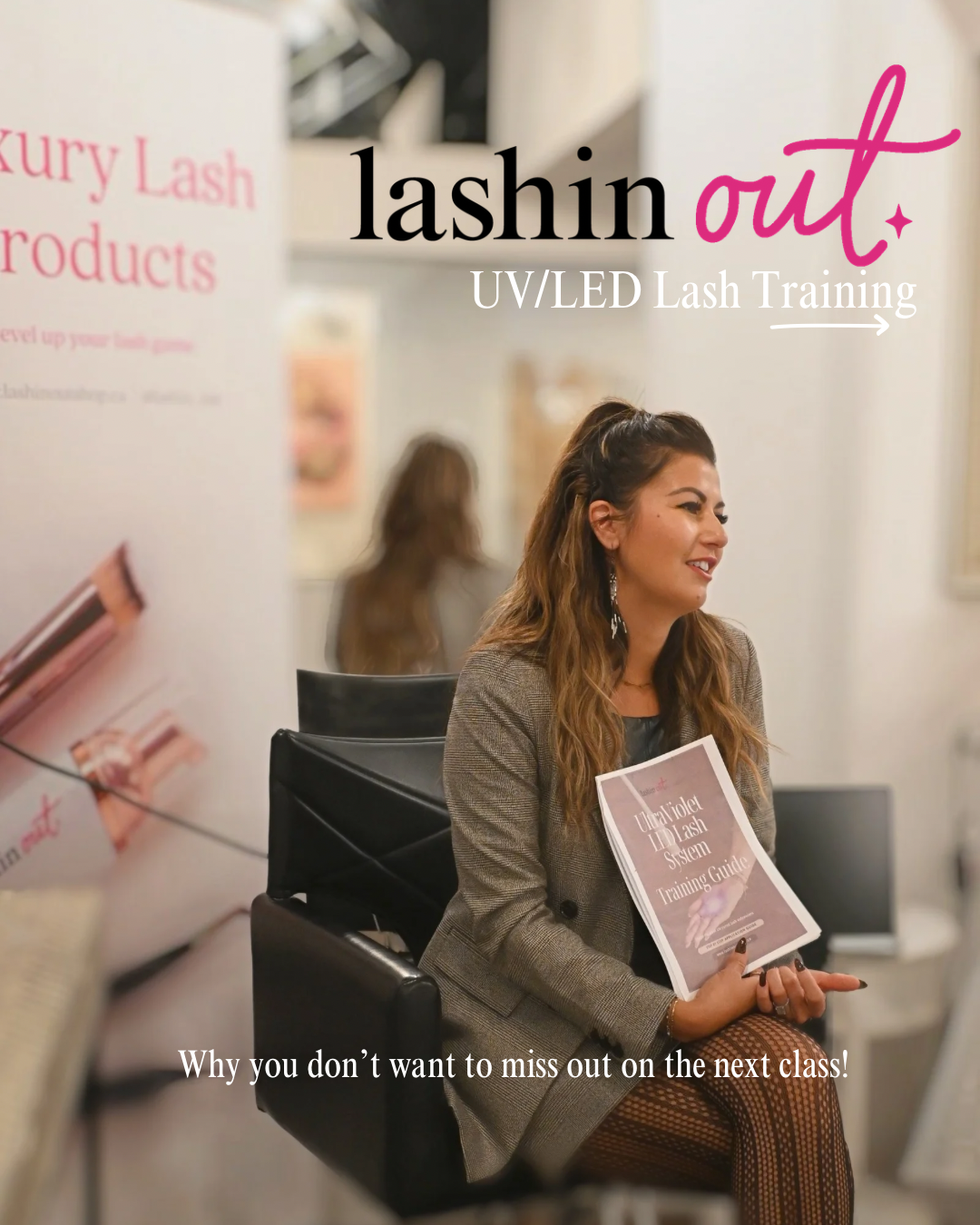

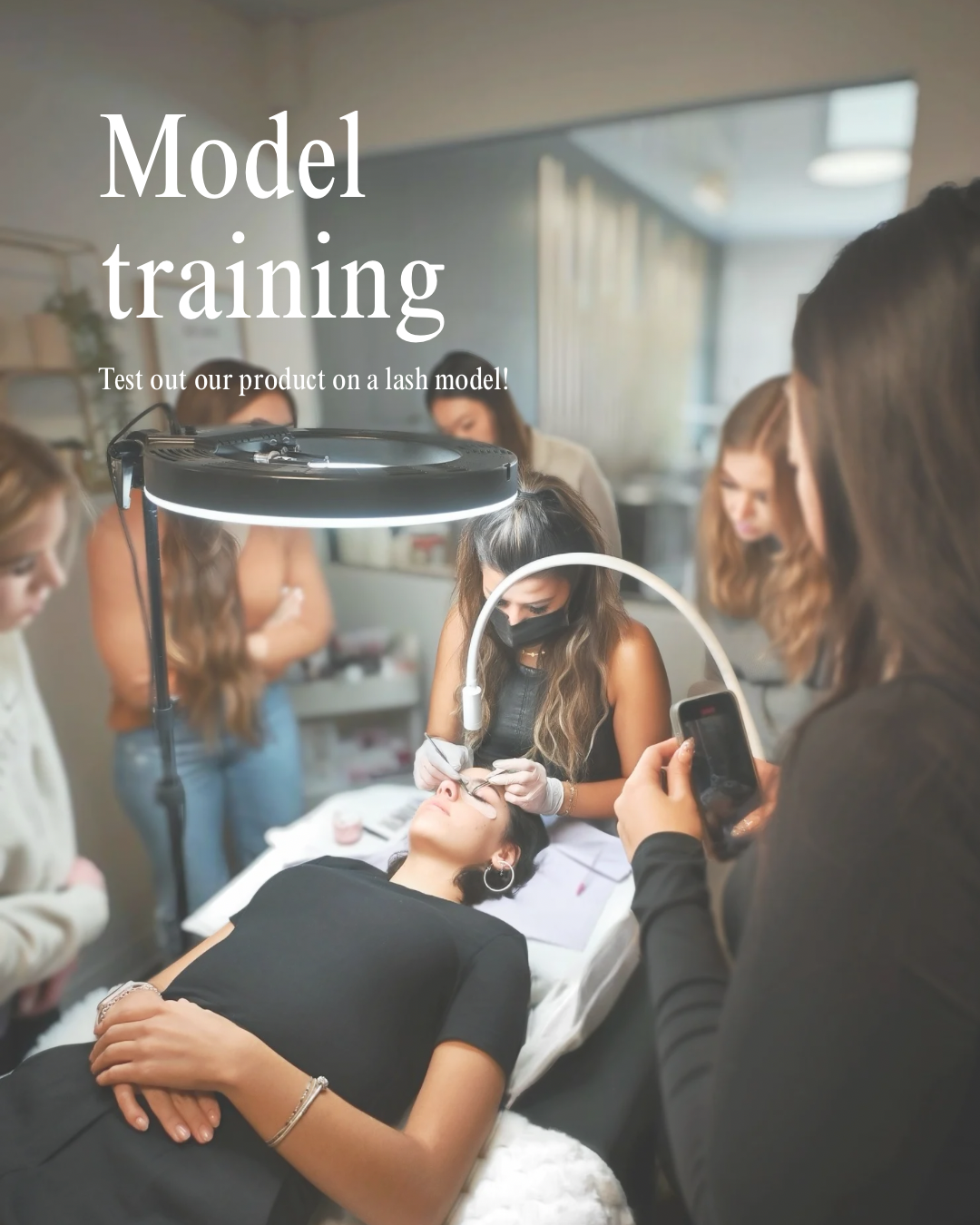

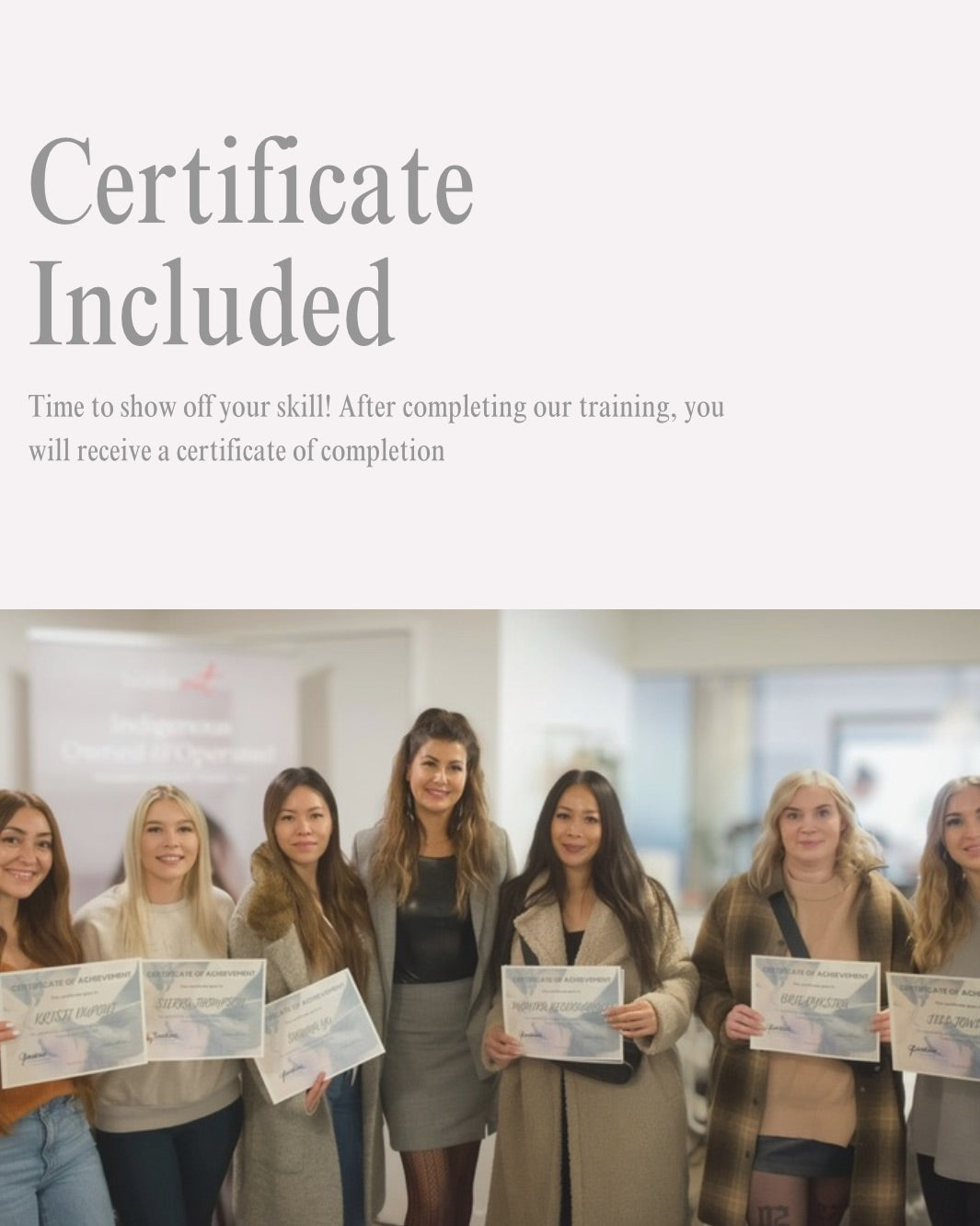
FREE UV/LED Lash Training! DEPOSIT
- Regular price
-
$100.00 - Regular price
-
- Sale price
-
$100.00
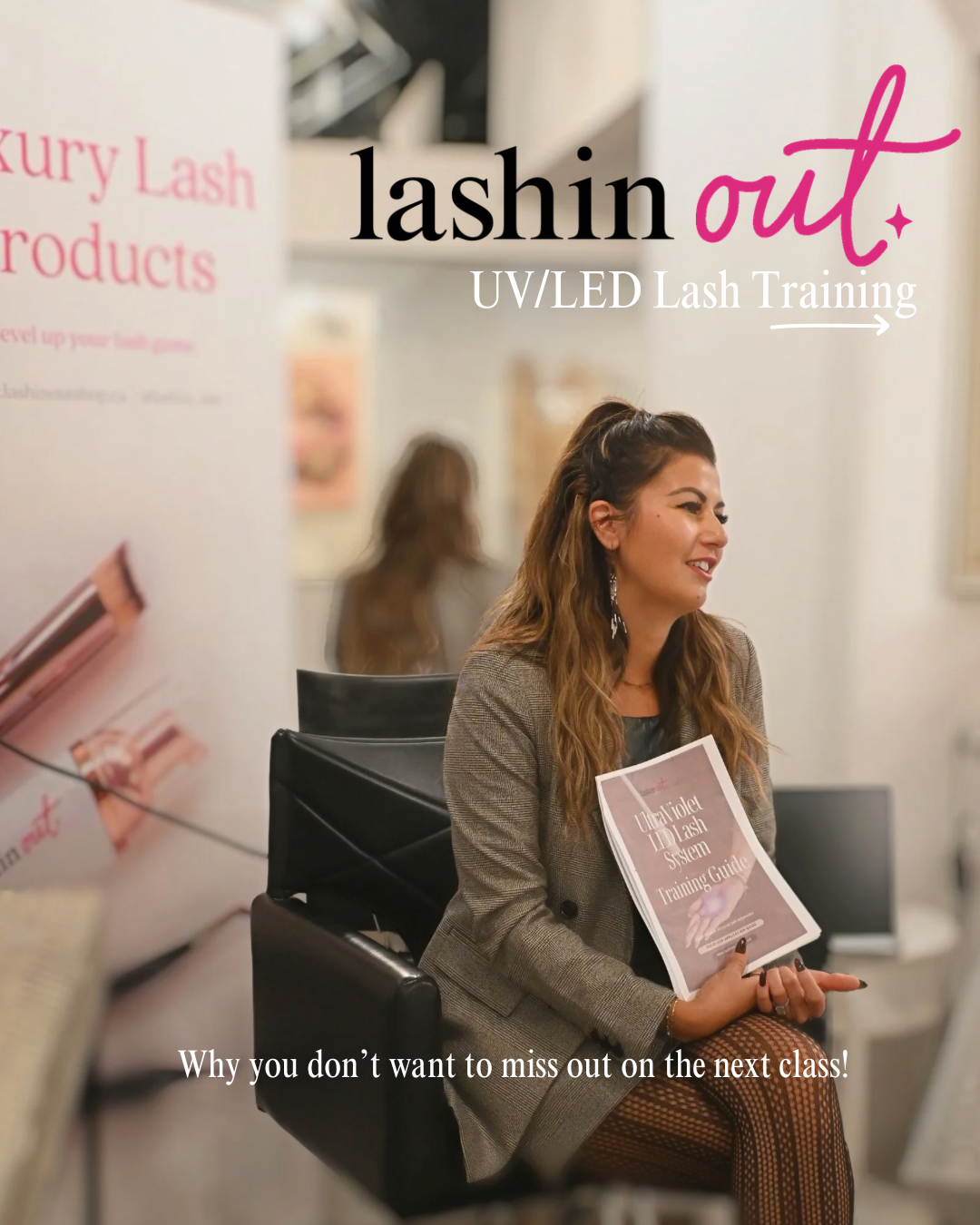
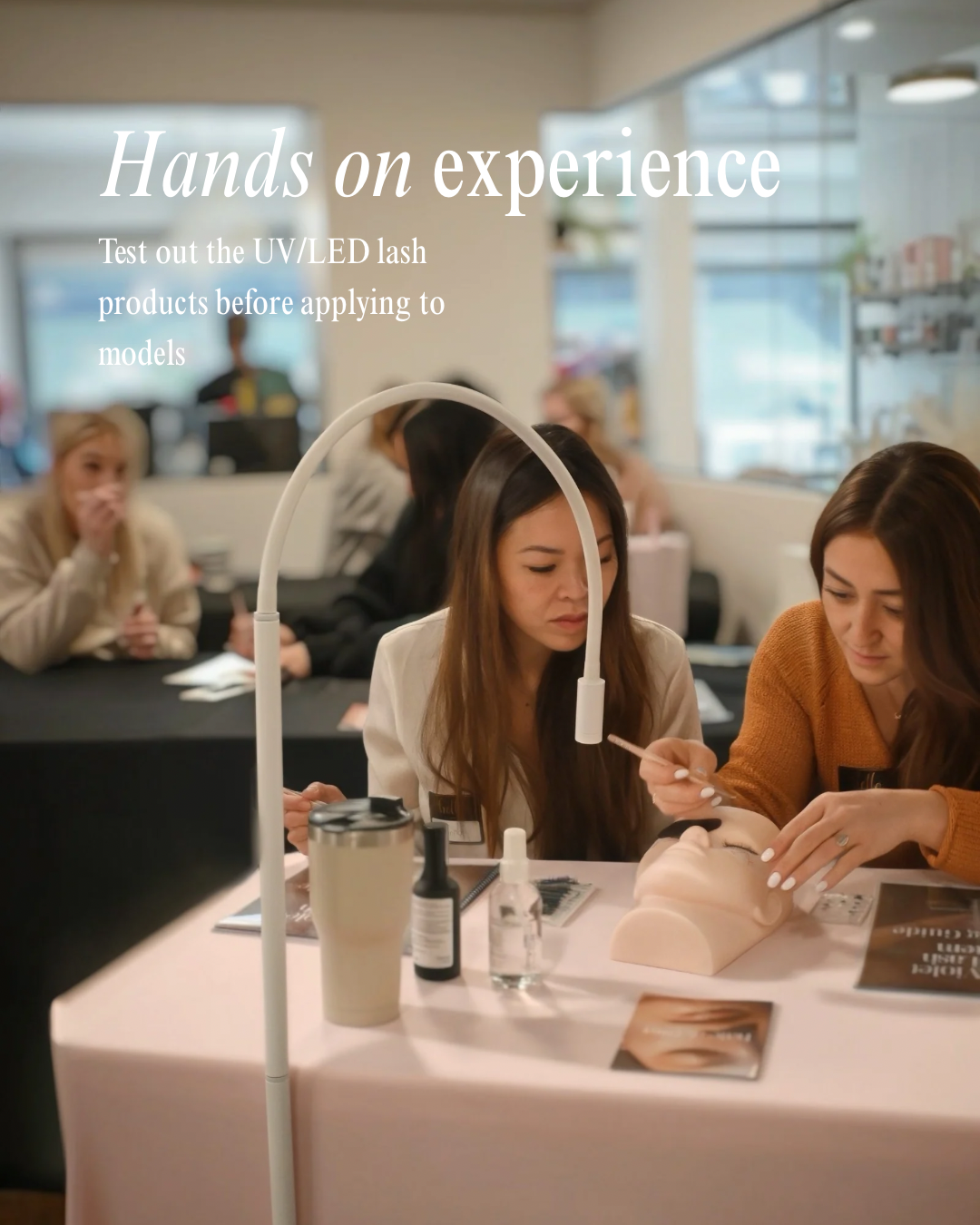
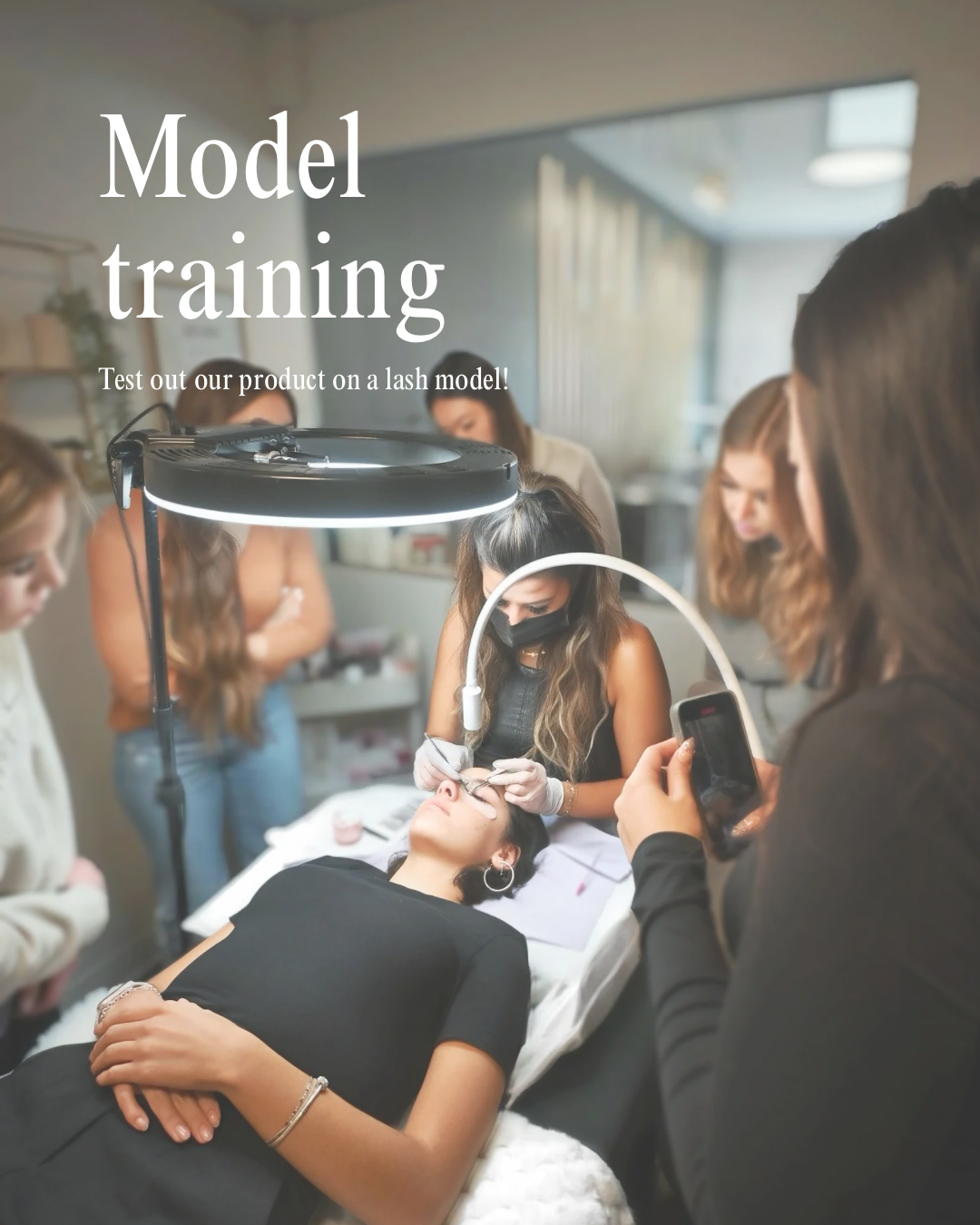
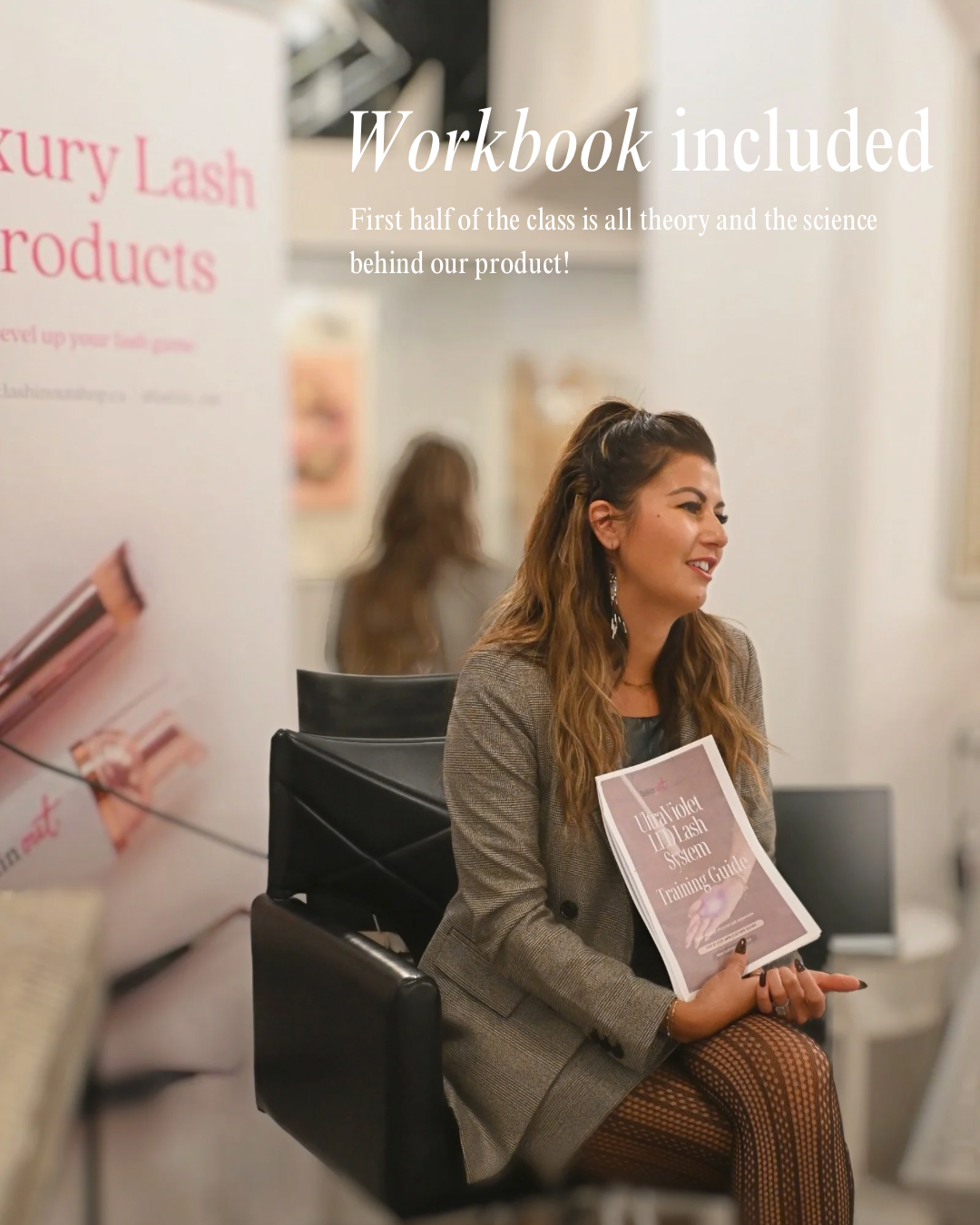

Have lash questions?? Book a FREE 30 Zoom session!
-
Customer service
info@lashinout.ca -
Follow us
